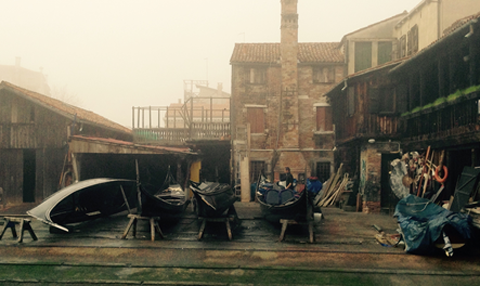Week Six ~by Katie
Week six of the program here in Venice was reading week, and we all had a break from our lectures and on-site visits. Since my roommates decided to leave town for the week, it was the perfect time for me to have a visitor, and my sister and my three-month old nephew came to stay with me. Although I stayed in Venice for the break, I thought I would blog about it since the week consisted of me showing my sister around Venice, a place she had never been before, and I thought it might be interesting to anyone who plans to visit at some point.
For most of the week, the city experienced acqua alta. Acqua alta literally mean ‘high water’ in Italian, and happens every year around this time. Basically, the tide in the lagoon gets very high and it causes floods all around Venice, especially at low points in the city like Piazza San Marco. An alarm will ring, usually in the morning, that can be heard throughout the city, and tells people what level the water is at that day (one long tone means 110 cm, for example, while four shorter tones means 140 cm, which is exceptionally high). The good news is that it usually lasts for only a few hours, so it’s normally gone by the afternoon. The city also puts up walking boards around vaporetto (boat bus) stops and other important destinations. All in all, it’s not too much of an inconvenience, but you obviously need to be prepared with rainboots or slip on acqua alta shoe covers.
Despite the acqua alta, my sister, nephew, and I did a lot of walking around the city. Venice is not very big and it’s easy to access all different parts of the city by foot (or by hopping on the vaporetto), even in acqua alta. Mainly we would choose a destination, like Piazza San Marco, a church, or a museum, and then make our way there, stopping along the way when something would catch our eye.
Some highlights were visiting the Frari church and seeing Titian’s Assumption of the Virgin, which my little nephew was very taken with. We also visited the Peggy Guggenheim Collection and their beautiful sculpture garden, and grabbed a bite to eat in the café amongst the sculptures. It was also a perfect time to visit St. Mark’s Basilica, since it’s not as touristy in November and the rainy, dreary day outside only added to the moody and dark atmosphere inside.
Nearby to St. Mark’s, we made our way to the Scala Contarini del Bovolo, a beautiful palace with an external spiral staircase, as well as Ca D’Oro, a famous palace on the Grand Canal (now a gallery). We also visited the plague-church Santa Maria della Salute, the Dominican church SS Giovanni e Paolo, as well as the Church of San Giorgio Maggiore and its amazing campanile, which you can take an elevator to the top of for amazing views of the city.
We also did a couple of day trips during the week. We took the train to Padua and visited the amazing botanical gardens, which are the world’s oldest academic botanical garden that is still in its original location. We also took the vaporetto boat to the islands of Torcello, Burano, and Murano. In Torcello, an adorable island with only 64 inhabitants, you will find one of the most beautiful Venetian-Byzantine cathedrals. Burano is a small island known for its lacework and fishing, and is filled with small canals and bright, multicoloured houses. Murano is where you can find all the Murano glass shops you could ever possibly want or need, as well as the beautiful Church of Santa Maria e San Donato.





